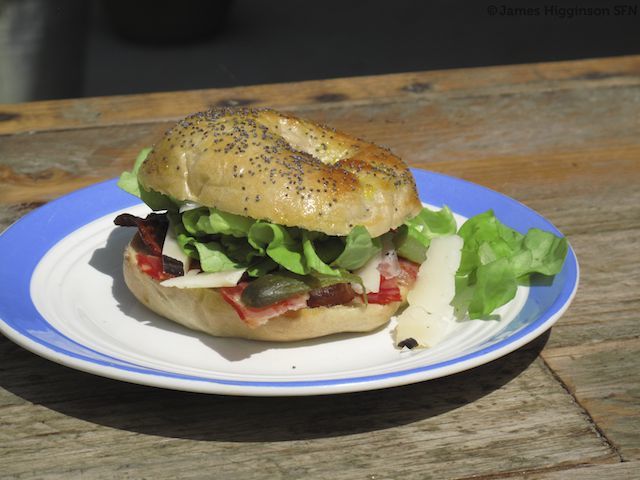Just because you are all being good, here is an excellent dessert to go with it:
Bakewell Tart
For the pastry
300g/10½oz plain flour, plus extra for dusting
125g/4½oz unsalted butter
30g/1oz sugar
1 free-range egg, plus 1 extra, beaten, to glaze
2 tbsp milk, to bind (if needed)
For the filling
225g/8oz butter, softened
225g/8oz sugar
225g/8oz ground almonds
3 free-range eggs
1 lemon, finely grated zest only
50g/2oz plain flour
jar cherry jam
flaked almonds, for sprinkling
Method
1. For the pastry, place the flour, butter, sugar and egg into a food processor and pulse to combine. If necessary, add a little milk to help bring the mixture together.
2. Turn the dough out onto a floured work surface and roll out until large enough to line a 26cm/10in tart tin. Carefully lift into the tin, then place into the fridge to chill for an hour.
3. Preheat the oven to 200C/gas 6.
4. Fill the tart case with a sheet of greaseproof paper weighed down with baking beans or rice. Bake the tart case blind in the oven for 15-20 minutes.
5. Remove the paper and beans and brush the pastry all over with beaten egg. Return to the oven for a further five minutes, until golden-brown. Remove from the oven and turn the oven temperature down to 180C/gas 4.
6. For the filling, beat the butter and sugar together in a bowl until pale and fluffy.
7. Mix in the ground almonds, then crack in the eggs one at a time, beating well between each addition - don't worry if the mixture begins to split, just add a little of the flour.
8. Fold in the lemon zest and the flour.
9. Spread some of the jam generously across the base of the pastry, leaving a 2.5cm/1in gap around the edge.
10. Spread the filling mixture over the jam and sprinkle over the flaked almonds.
11. Transfer to the oven and bake for 20 minutes, or until set and golden-brown. Allow to cool in the tin before serving in slices.
I usually make a non-egg vanilla custard (milk, cornflour (Maizena), sugar and vanilla essence type) to put on it.
Bakewell tart is from the town of Bakewell in the Derbyshire Peak District, but be warned it is one of those recipes that requires practice and experimenting to get perfect. I have been tweaking mine for about 30 years and hope to get it right soon ;-)
